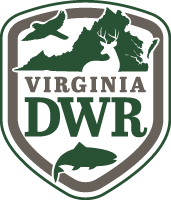The following local ordinances apply in Smyth County:
- Sec. 20-179.4 - Specific prohibitions. - Explosives, weapons, fireworks, and similar devices. (reference)
(4) Explosives, weapons, fireworks, and similar devices. Using or firing any explosives, weapons (except for lawful hunting activities and in the defense of one's self, the defense of another person, or the defense of property), fireworks or similar devices which creates impulsive sound in such a manner as to permit sound to be heard across a residential real property boundary, or through partitions common to two dwelling units within a building or on any public right-of-way or public property, in either case between the hours of 11:00 p.m. and 7:00 a.m.
- Sec. 8-128. - Dogs running at large; dogs and cats to be inoculated or vaccinated. (reference)
(a) It shall be unlawful for any person in the county to permit a dog owned by him, or by his minor children, or a stray dog not actually owned by such person but permitted to stay principally on his premises, to run at large in the county, or to be off the premises of such owner or permittee, unless under leash.
(b) The owners or custodians of all dogs and domesticated cats four months old or more shall have such dogs and cats currently inoculated or vaccinated against rabies in accordance with Commonwealth law.
(c) It shall be unlawful for any person to permit a dog or cat which is not currently inoculated or vaccinated against rabies to run at large in the county or to be off the premises of such person.
(Ord. of 11-20-2009)
Editor's note— An ordinance adopted Nov. 20, 2009, amended § 8-128 in its entirety. The former § 8-128 pertained to similar subject matter and derived from the Code of 1978, § 4-15 and the Code of 1995, § 10-57.
State Law reference— Prohibiting dogs from running at large, Code of Virginia, § 3.1-796.93; rabies inoculation of dogs and domesticated cats, Code of Virginia, § 3.1-796.97:1; rabid animals, Code of Virginia, § 3.1-796.98; running at large of vicious dogs, Code of Virginia, § 3.1-796.100.
- Sec. 8-128.1. - Animal nuisance. (reference)
(a) Except as provided in subsection (b), it shall be unlawful to create an animal nuisance in the county. An animal nuisance is created when any companion animal, dog, cat or other domestic animal unreasonably annoys humans, endangers the life or health of other animals or persons, or substantially interferes with the rights of citizens, other than their owners, to the enjoyment of life or property. Such acts of animal nuisance include, but are not limited to, the following:
(1) Damages property other than that of the animal's owner;
(2) Attacks or disturbs other animals, persons or vehicles by chasing, barking or biting;
(3) Makes excessive noises including, but not limited to, barking whining, howling, caterwauling, or crying;
(4) Creates noxious or offensive odors;
(5) Defecates upon any public place or upon premises not owned or controlled by the owner, unless promptly removed by the animal's owner or custodian; or
(6) Creates an unsanitary condition or insect breeding site due to an accumulation of excreta or filth.(b) This section shall not apply to a companion animal engaged in lawful hunting in open season, including coon and bear hunting, or when being trained or exercised and generally accompanied by its owner or custodian, or (1) when participating in organized or specific obedience training, training classes, field trials or shows sponsored by recognized clubs or organizations in animal uses and events; (2) dogs that are participating in search and rescue operations carried out by any public or private safety agent or group; dogs participating in pet therapy programs sponsored by any hospital, clinic hospice nursing home, elderly facility or similar institutional facility; (3) dogs that are being trained as service dogs by a qualified service dog trainer; or any trained seeing eye dog; and (4) dogs which are being employed by law enforcement agencies in law enforcement operations.
(Ord. of 11-20-2009)

